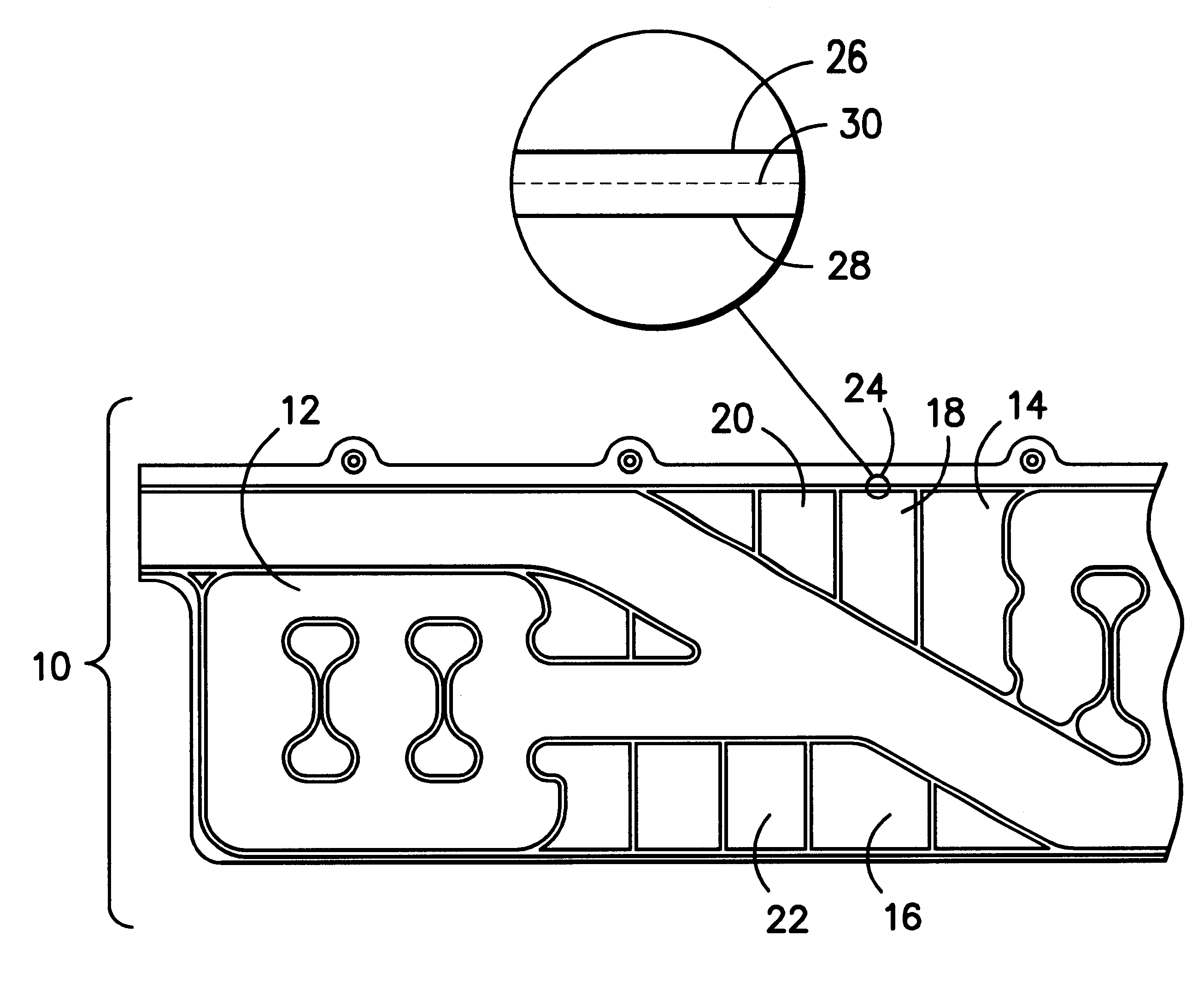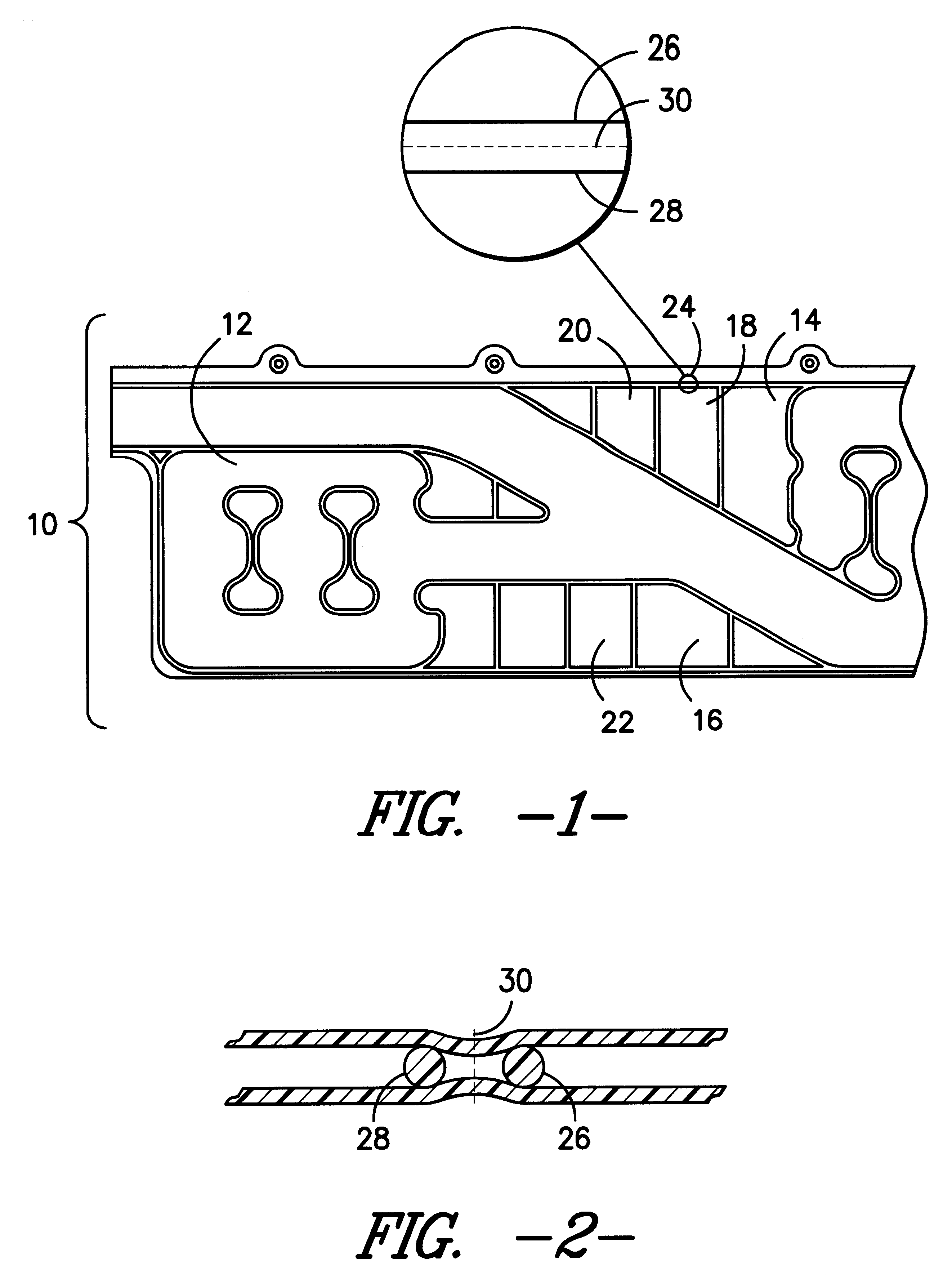Airbag cushion comprising sewn reinforcement seams
a technology of airbag cushion and reinforcement seam, which is applied in the direction of pedestrian/occupant safety arrangement, vehicular safety arrangement, other domestic articles, etc., can solve the problems of not preventing, but allowing deleterious yarn shifting, and the amount and/or thickness required of such coatings is relatively high
- Summary
- Abstract
- Description
- Claims
- Application Information
AI Technical Summary
Benefits of technology
Problems solved by technology
Method used
Image
Examples
example 1
Two woven fabrics, each comprising 420 denier nylon-6,6 yarns and exhibiting a 39.times.39 picks / ends per inch construction, were coated with 2.4 ounces of a standard polyurethane airbag coating plus an adhesion promoter applied to one side of each target fabric. The coated surfaces were then contacted together and a weld head was placed over the two-fabric composite. The two-fabric composite was then exposed to a high frequency electromagnetic field reversing itself in excess of 27 million times per second (27 MHz) which eventually heated up the film at the proposed weld location between the two fabrics. An electrode width of approximately 3 mm over the entire length of the two fabrics was utilized, thereby connecting the fabrics at one location. After cooling, the fabrics were then transported to a sewing machine. A seam was then sewn with a #138 thread through a single #140 needle, exhibiting about 20 stitches per 100 mm of seam length parallel to the welded seam and about 5 mm f...
example 2
Two woven fabrics, each comprising 210 denier nylon-6,6 yarns and exhibiting a 55.times.55 picks / ends per inch construction, were coated with 2.7 ounces of a standard polyurethane airbag coating plus adhesion promoter each fabric on one side of the target fabric. The coated surfaces were then contacted together and a weld head was placed over the two-fabric composite. An high frequency electromagnetic field reversing itself in excess of 27 million times per second (27 MHz) which eventually heated up the film at the proposed weld location between the two fabrics. Electrodes each having widths of approximately 6 mm, approximately 3 mm apart, over the entire length of the two fabrics were utilized, thereby connecting the fabrics at one location. After cooling, the fabrics were then transported to a sewing machine. A seam was then sewn with a #92 thread through a single #140 needle, exhibiting about 40 stitches per 100 mm of seam length parallel to the welded seam and about 5 mm from th...
PUM
| Property | Measurement | Unit |
|---|---|---|
| Thickness | aaaaa | aaaaa |
| Thickness | aaaaa | aaaaa |
| Thickness | aaaaa | aaaaa |
Abstract
Description
Claims
Application Information
 Login to View More
Login to View More - R&D
- Intellectual Property
- Life Sciences
- Materials
- Tech Scout
- Unparalleled Data Quality
- Higher Quality Content
- 60% Fewer Hallucinations
Browse by: Latest US Patents, China's latest patents, Technical Efficacy Thesaurus, Application Domain, Technology Topic, Popular Technical Reports.
© 2025 PatSnap. All rights reserved.Legal|Privacy policy|Modern Slavery Act Transparency Statement|Sitemap|About US| Contact US: help@patsnap.com


